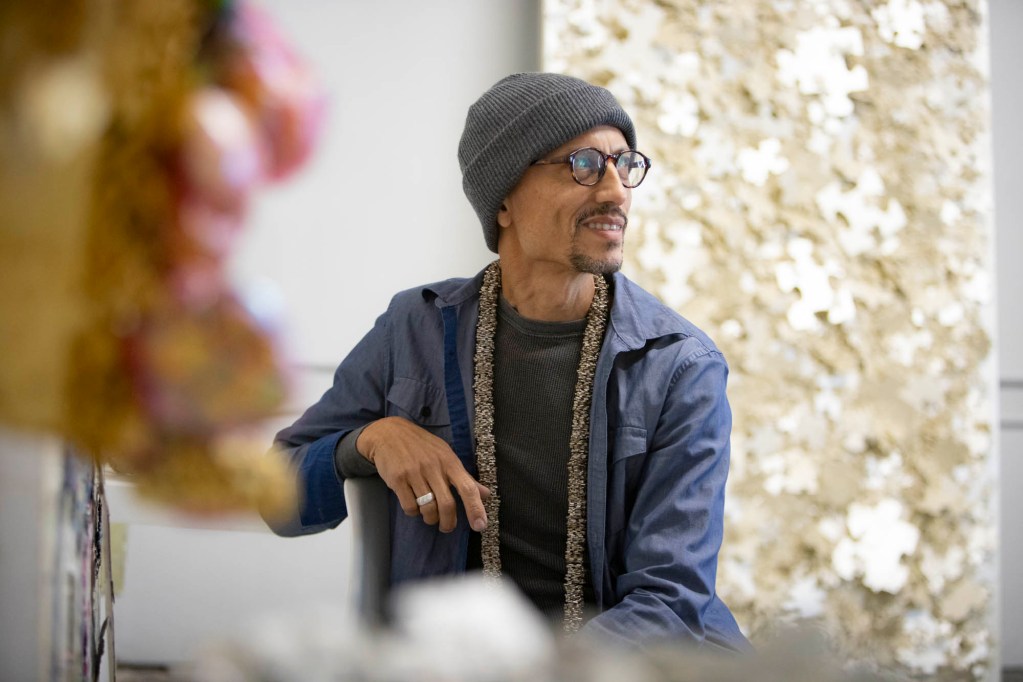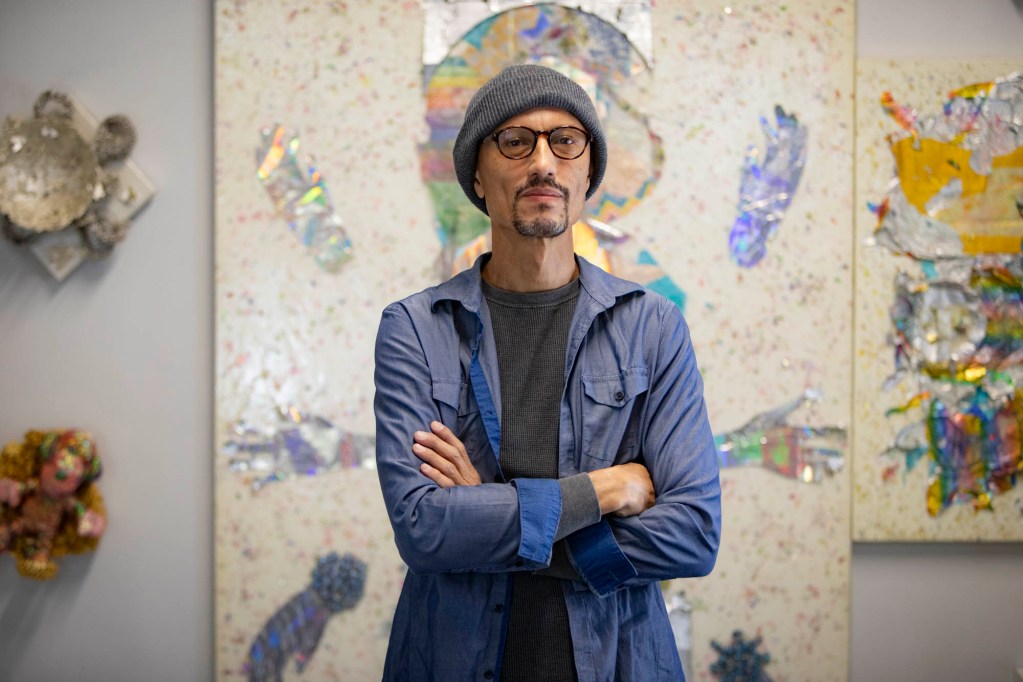
On one recent chilly morning, I hopped in my car and headed to Atlanta’s Westside. Rumbling across the gravel lot and weaving through a large metal gate, I made my way to the entrance of Murphy Rail Studios. A large metal door opened and artist Jeffrey Wilcox Paclipan stepped out, beckoning me in. We headed inside to the studio he shares with his friend and fellow artist Sharon Walker.
I first met Paclipan during the Art Party at the Atlanta Contemporary last fall where he had been a resident studio artist for the past three years. The Art Party had been a blur of activity, with a steady influx of visitors milling about through his space, and Paclipan was kept busy with art sales as I roamed through the studio. I found his art to be playful, quirky, and unexpected.
In the months since the Art Party, Paclipan ended his residency at the Atlanta Contemporary and relocated to his current shared studio. There were hanging pieces, writhing snakes, undulating sculptures, and one of his embellished and bound Radiant Toy sculptures.
Paclipan’s work is as unique and eclectic as he is. He works almost exclusively in assemblage with a few stand-alone sculptures in the mix. He is perhaps most commonly known for his use of discarded puzzle pieces which he finds at thrift stores around the city. Some hanging pieces feature shiny and iridescent materials that appear to almost flow off the canvas like water, and a slight breeze makes them flutter as if it were alive.
As we sat together and talked, Paclipan absentmindedly played with a string of puzzle pieces on the table in front of him. Before his portrait, he draped one around his neck like a scarf.


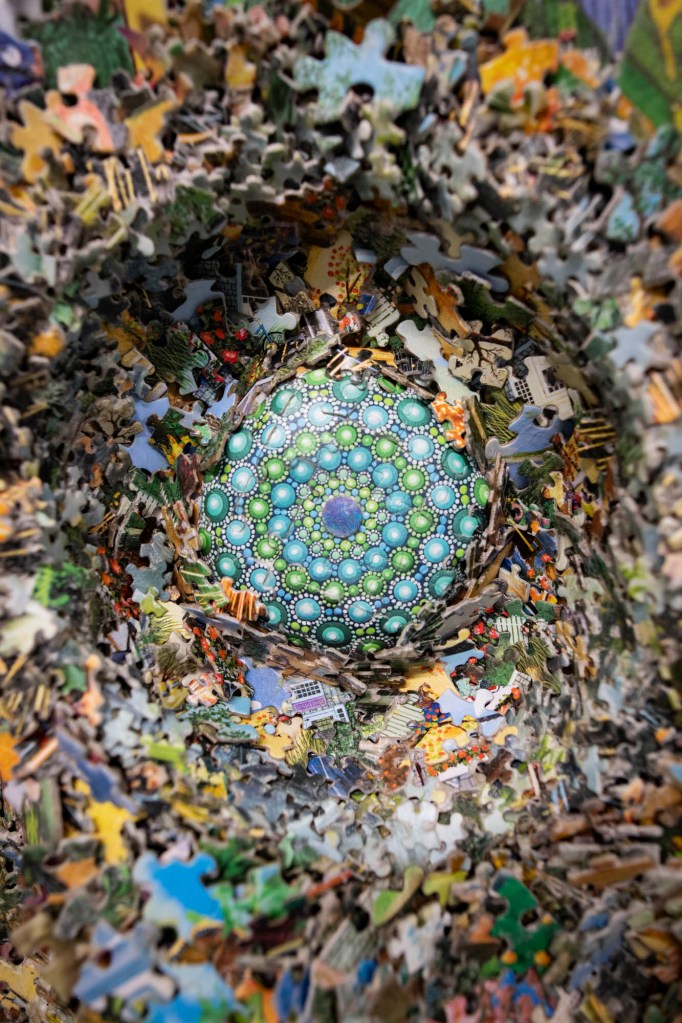
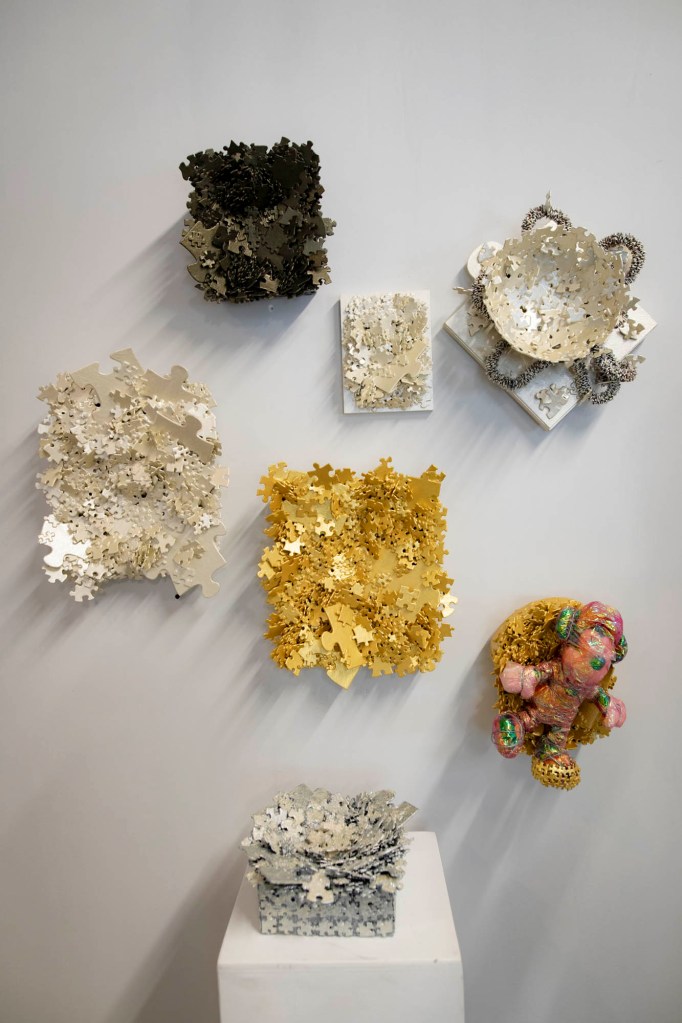


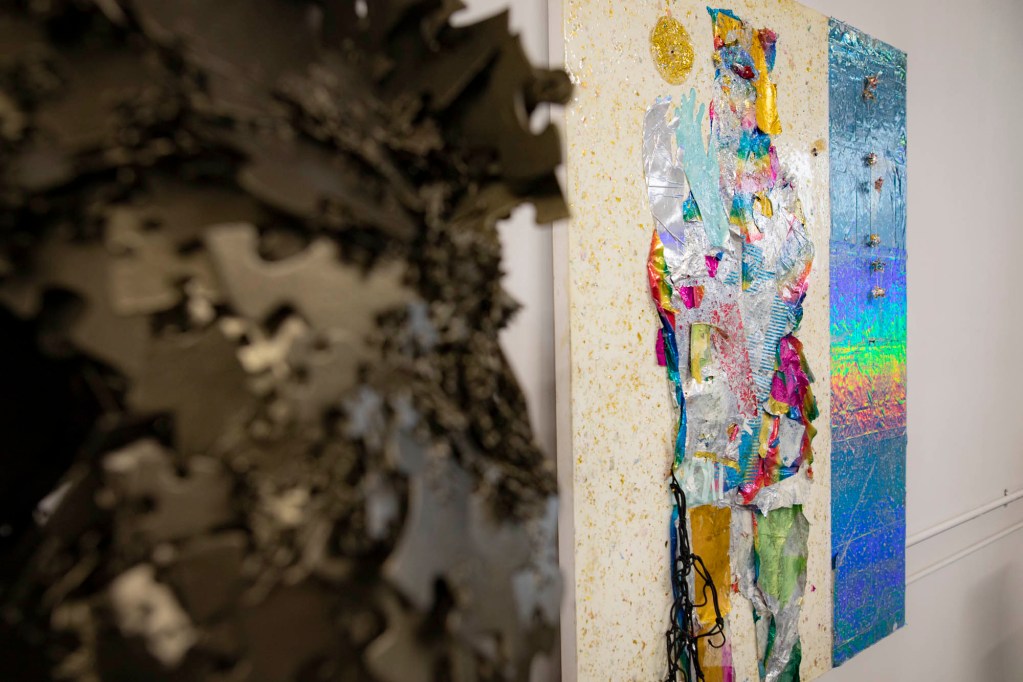
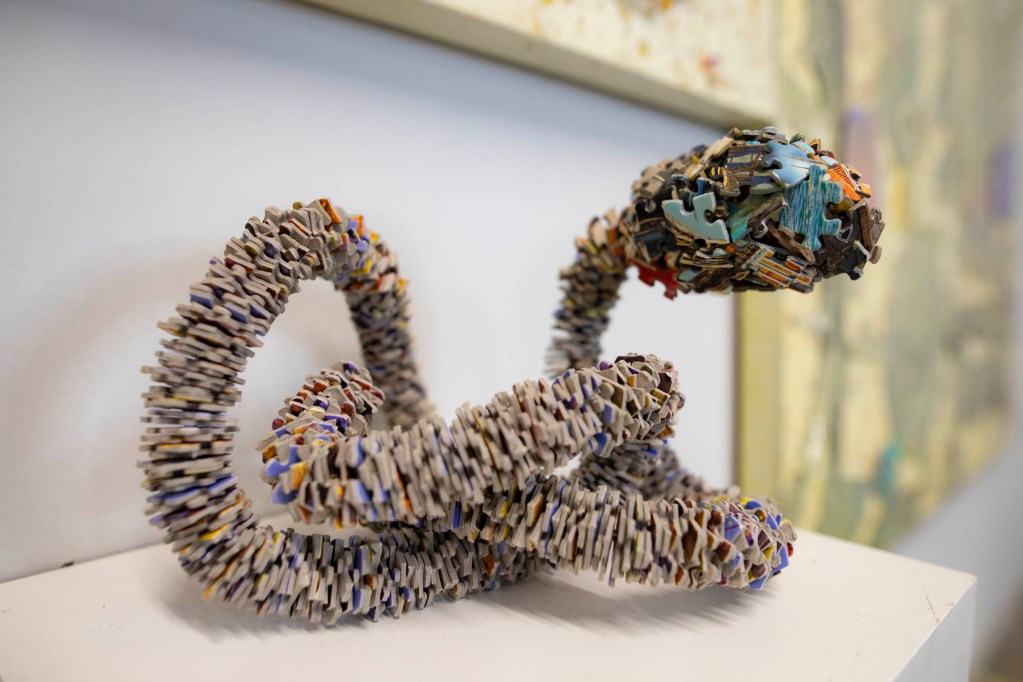
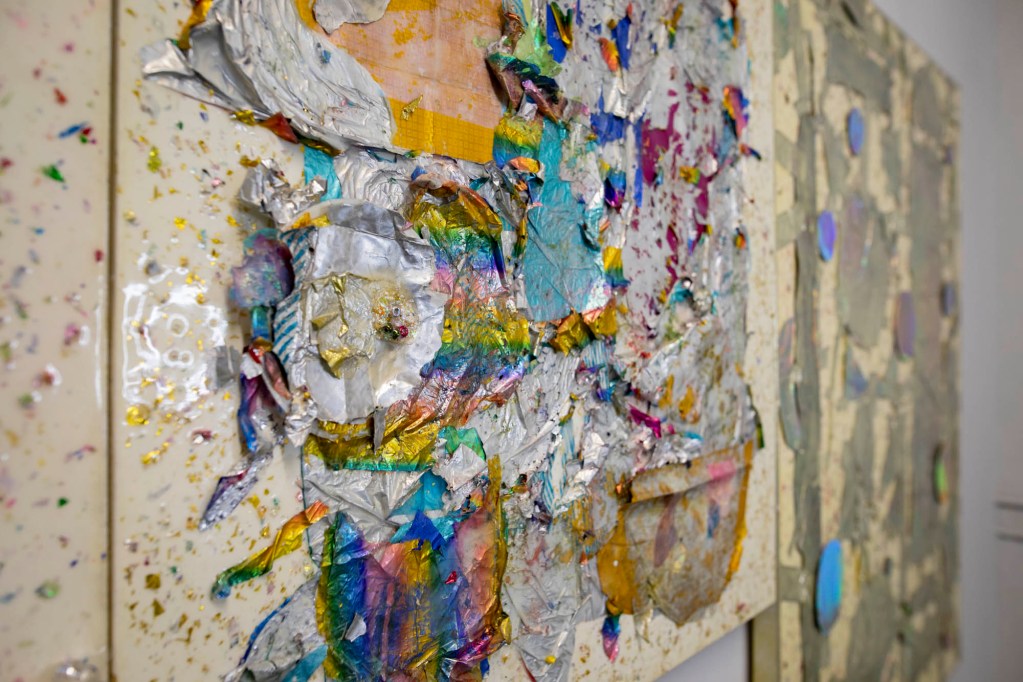
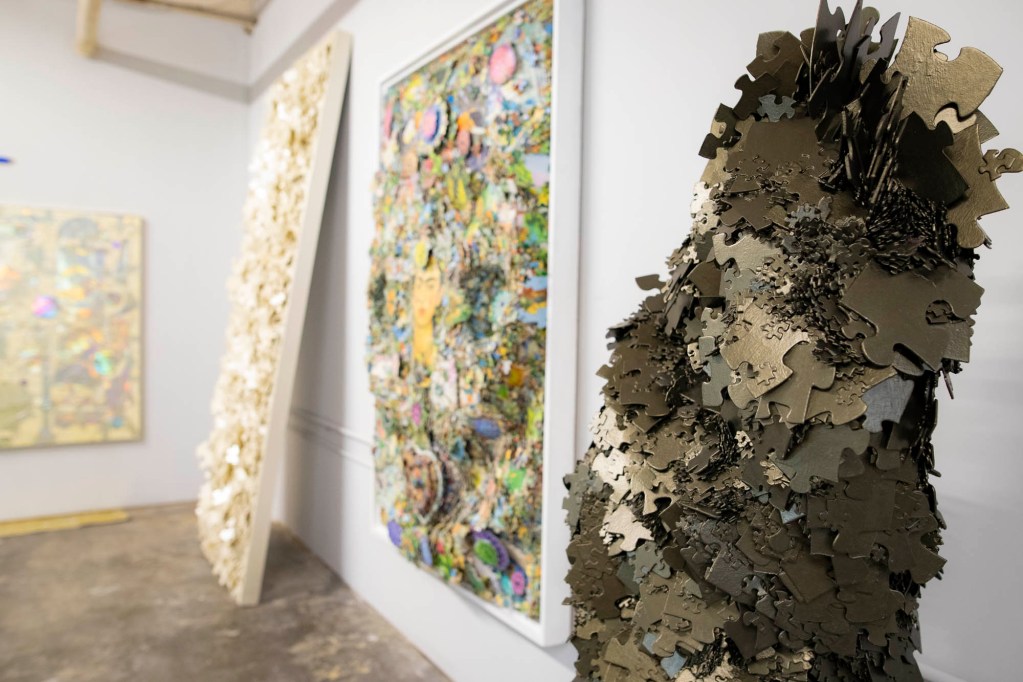

Born in the Philippines, Paclipan’s father enlisted in the Air Force which required their family to move to the states when he was an infant. Every two to three years they would be relocated, a tumultuous way for a quiet and reserved kid to grow up. Eventually, his father moved the family to Alaska right around the time that Paclipan graduated from high school. He had been offered a scholarship to a school in Wyoming, but he misread the dates and arrived a week too early on the campus. With nowhere to stay, he promptly boarded a plane back to Alaska and never returned to that school.
For a reclusive young creative like Paclipan, there was not much to do in Fairbanks. He found work as a busser at Big Pattie’s Restaurant, an all-inclusive entertainment center with a theater, bowling alley, and shops. “I have always drawn and kept to myself,” recalled Paclipan. “I didn’t have a lot of friends.” Instead, he focused on pursuing his love for art, eventually taking some uncredited ceramics classes at the University of Anchorage.
One day in 1986, Paclipan came across an advertisement in the back of one of his sister’s GQ Magazines. It showed a well-dressed couple standing on the beach, and the image captivated young Paclipan. It was an ad for the International Fine Arts College in Miami, Florida, and that was all it took to entice him into his next cross-country move. He moved to the beach, enrolled, and graduated with an Associate in Arts Degree in 1989.
Unsure of what he would do next, Paclipan realized he needed to find work. At first he pursued graphic design, but ultimately found it to be unsatisfying. He happened to meet a student who connected him to a woman who commissioned muralists to paint scenes inside condos along the Miami beaches. “I was miserable, though,” he admitted. “I didn’t know if I had any gifts or art skills.”
One new connection, a couple who were both lawyers, opened a door for Paclipan that carried him into the next phase of his career. They had hand-painted furniture in their home that had been crafted by Richard Warholic, a furniture artist in Florida City. Paclipan began working for the artist at his beach house that Paclipan refers to as a “paradise house.” Surrounded by tropical plants and peacocks, Warholic was a successful working artist who invited many creatives from around the world to visit him at his beachfront home. Though Paclipan was not paid well, it opened his eyes to the possibility that he, too, could have an “incredible artistic life.”
In 1996, Paclipan decided he needed a fresh start and moved to Atlanta. In the early 2000s, Atlantic Station hosted regular art festivals and artists were able to affordably rent a booth there. “I had a house full of artwork so I thought why don’t I try it,” he said. He met many students, artists, and art collectors from around the world during these markets.
“I mainly hung up art and just hid behind my tent waiting for a response,“ admitted Paclipan with a chuckle.
“Periodically I would meet artists and sell something, but it was kind of rough going there.” One artist he met, Mohamed Elganoby who hailed from Egypt, had some work in a show at the Bill Lowe Gallery. He invited Paclipan to come along and the experience inspired him to shift his focus to developing his fine art.
Paclipan joined an art critique group moderated by Michael David, a well-respected artist who has since relocated to Brooklyn, New York where he now runs his own gallery, M. David & Co. The connections he made with influential artists during this time really helped Paclipan to expand his horizons as an artist.
Sitting in his studio and surrounded by his works, Paclipan reflected on the journey that has led him to where he is today. “I’ve always used repurposed materials, discarded paints, wood, found objects, and then I started going to secondhand stores,” he told me. By using forgotten items and repurposing them into art he imbues them with a new life, leaving the audience to ponder the object’s transformation from commonplace to exquisite.
It has been at times difficult for Paclipan, who is shy and whose work could be viewed as quirky or nontraditional, to find a sense of belonging in the art world. While he wants to be a part of the art community in Atlanta, he isn’t interested in abandoning his personal style in order to do so. “I rebelled… Why do I have to be a fine artist, why do I have to use oils? Why?” And so, he has been working to find a place where he can be comfortable being himself instead.
Recently, when Paclipan watched a movie about the experimental liberal arts school Black Mountain College, he was surprised to learn that some of the biggest names in the art world at the time had been romantically involved. “I’m realizing that in the story with Andy Warhol he knew Robert Rauschenberg and Jasper Johns were dating,” said Paclipan. “I also have this issue with being a gay man. I feel guilty. My mom is religious, she’s Filipina, my dad was in the military, and I thought you had to be a macho man.”
“I was trying to be a robot, I felt like I couldn’t be too feminine in public,” he explained. In time, he has come to understand that there is a place for him here, exactly as he is. Learning that even the greatest names in the art world had to face prejudice also and eventually find their own community was reassuring to Paclipan.
Paclipan has, in his own gentle, demure, and unassuming way, carved out a niche that suits him and his art. Though the process has been slow, like a river wearing down stone, it has brought him to some incredible places. His CV includes group and solo exhibitions at the likes of Hathaway Contemporary Gallery, Mason Fine Art, T.E.W. Gallery, Bill Lowe Gallery, Mammal Gallery, Life on Mars, Jennifer Balcos Gallery, and MINT Gallery among others.
So, what’s the key to making it as an artist? “Serendipity, timing… keeping your higher frequency and staying positive,” said Paclipan thoughtfully as he looked around his studio. “I surrounded myself with other artists that do their own thing, and I still believe that all things are possible.”

